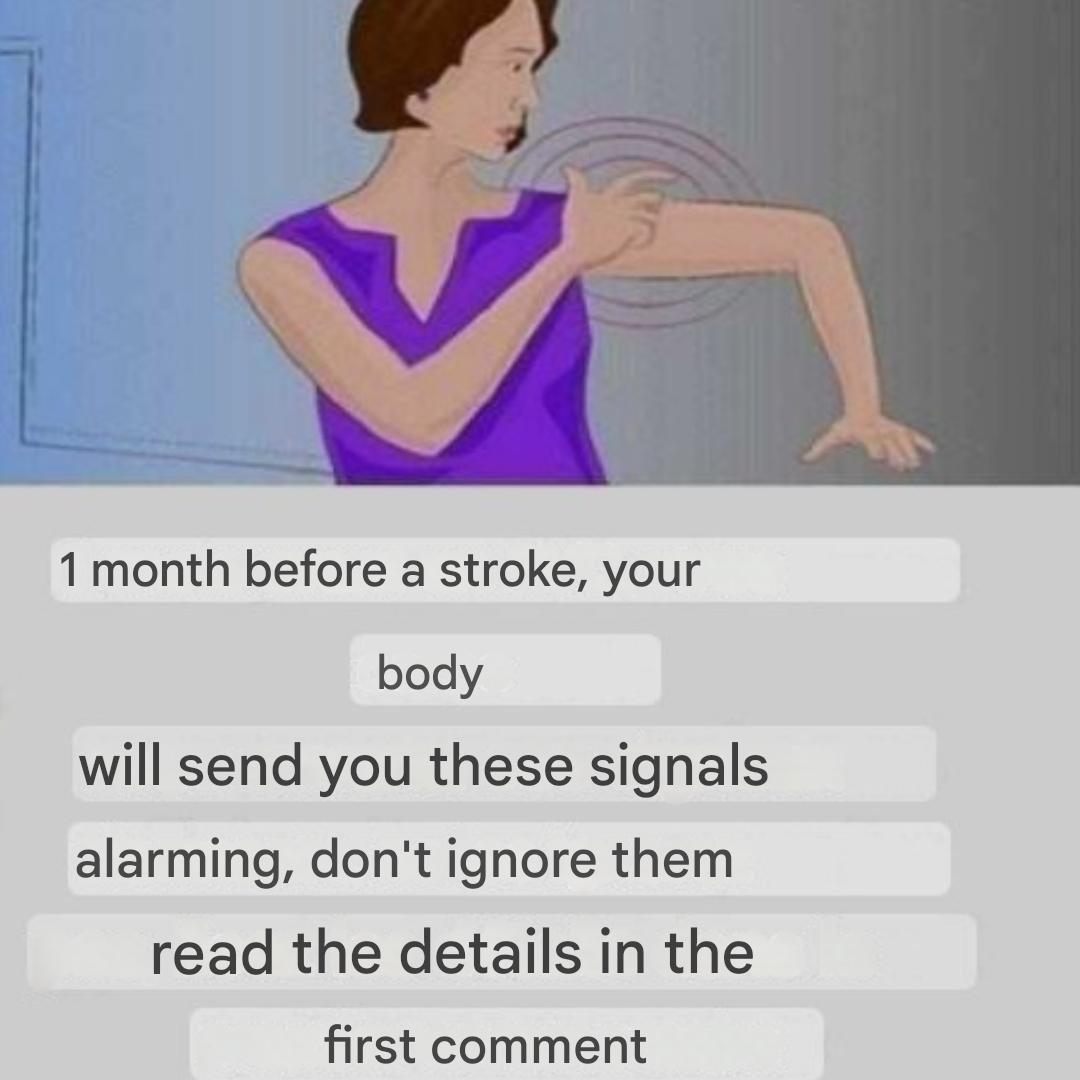ADVERTISEMENT
#### 5. **Speech Difficulties**
Difficulty speaking or understanding speech is another potential warning sign of a stroke. Some individuals may experience slurred speech, trouble finding the right words, or a sensation of “numbing” in the mouth and throat.
If these symptoms appear intermittently, it might be due to a transient ischemic attack (TIA) rather than a full stroke. However, such speech changes, especially when they occur in conjunction with other symptoms, should always be evaluated by a medical professional.
#### 6. **Difficulty Walking and Loss of Coordination**
Experiencing difficulty walking or balancing can signal problems with the blood flow to the brain, which may precede a stroke. Individuals might find themselves tripping more often, feeling unsteady, or having difficulty maintaining a straight line when walking. Loss of coordination, accompanied by dizziness or vertigo, may also occur.
These symptoms may appear progressively over time, with minor instability escalating to more noticeable difficulties in walking or coordination. This could be due to early signs of damage in the areas of the brain that control movement and balance.
#### 7. **Fatigue and Sleep Disturbances**
Persistent, unexplained fatigue, especially if it’s accompanied by sleep disturbances, could be a precursor to a stroke. People who are at risk for a stroke may experience low energy levels, excessive sleepiness during the day, and difficulty falling or staying asleep at night.
Fatigue can be a common symptom of various health conditions, but if it is unusual or occurs alongside other stroke-related symptoms, it could indicate the body is under stress due to reduced blood flow to the brain.
#### 8. **Changes in Mood and Cognitive Function**
Stroke risk can also be indicated by changes in mood and cognitive function. Sudden or unexplained mood swings, depression, or anxiety may occur in the weeks before a stroke. Cognitive difficulties, such as confusion, difficulty concentrating, or memory problems, may also be noticeable during this time.
These mood and cognitive changes are often subtle at first, but they can progress over time. If these symptoms are present alongside other neurological signs, it’s essential to seek medical attention.
### Why Do These Warning Signs Appear?
The warning signs that may appear a month or so before a stroke are linked to reduced blood flow to the brain, often due to the buildup of plaque or a narrowing of the arteries (atherosclerosis). When the blood vessels become narrowed or clogged, the brain may not receive enough oxygen and nutrients, leading to the subtle symptoms described above.
The presence of these symptoms could be a sign that the individual is at an increased risk of having a stroke in the near future. This is why it’s essential to take these warning signs seriously and seek medical advice as soon as possible. The earlier a potential stroke risk is identified, the better the chances of preventing it or minimizing the damage.
### Steps to Reduce Stroke Risk
If you experience any of the warning signs listed above or if you are concerned about your stroke risk, here are some steps you can take to reduce your chances of having a stroke:
1. **Regular Checkups**: Schedule regular checkups with your healthcare provider, particularly if you have risk factors like high blood pressure, diabetes, or high cholesterol.
2. **Healthy Diet**: Adopt a heart-healthy diet rich in fruits, vegetables, whole grains, and lean proteins. Avoid excessive salt, sugar, and unhealthy fats that can contribute to high blood pressure and cholesterol levels.
3. **Exercise**: Regular physical activity can improve blood flow, reduce inflammation, and help maintain a healthy weight. Aim for at least 30 minutes of moderate exercise most days of the week.
4. **Quit Smoking**: Smoking significantly increases your risk of stroke. If you smoke, seek help to quit.
5. **Limit Alcohol Consumption**: Excessive alcohol use can contribute to high blood pressure and increase the risk of stroke. Limit alcohol intake to moderate levels.
6. **Manage Stress**: Chronic stress can increase the risk of stroke. Engage in relaxation techniques like meditation, yoga, and deep breathing to reduce stress.
7. **Take Medications as Prescribed**: If you have underlying health conditions like high blood pressure, diabetes, or high cholesterol, ensure that you take medications as prescribed by your doctor.
### Conclusion
While strokes are often thought to occur suddenly, many individuals experience warning signs weeks or even months before a major event. Recognizing the early symptoms of a stroke or TIA and taking action quickly can make a significant difference in preventing further damage. If you experience any of the symptoms mentioned above, especially in conjunction with other risk factors, it’s important to seek medical attention immediately.
By maintaining a healthy lifestyle and staying vigilant about potential warning signs, you can reduce your risk of stroke and increase your chances of living a long, healthy life. Early intervention is key, and recognizing the symptoms of a stroke before it strikes could save your life.
